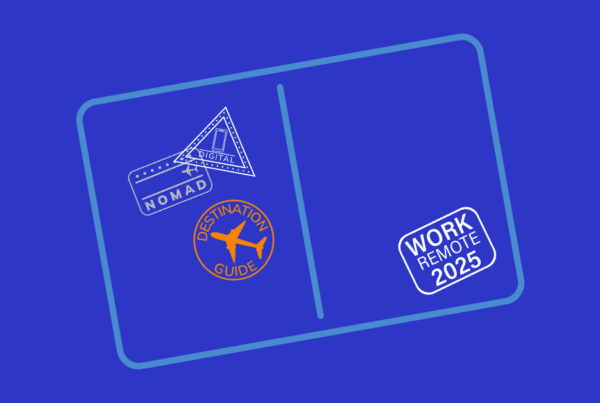
People no longer have to revolve their lives around work.
Everyone who has had to work at a physical location knows the importance of living close to where you work. It’s why recent graduates flood to major cities like New York, Los Angeles, or Chicago. The opportunities are better and the pay is higher.
While there are many people who love the big-city life, it’s not cut out for everyone. However, in order to get movin’ on your career and find some decent success, those are the places you need to be. Until now.
In March 2020, COVID-19 unearthed a big truth about the workforce: the typical 9-to-5, in-office setup is severely outdated and inefficient. The technologies we needed for remote work were already there, however, business leaders ignored their benefits until it was absolutely necessary. And when it became necessary, we learned tech applications like Zoom, Slack, Dropbox, Google Drive, and more are simple to navigate and actually better for collaboration and productivity.
Now that we’re more than a year out from our nation’s temporary shuttering, workers have had time to learn what the best working environment looks like for them, and research shows the shift from in-person to remote has had no effect on productivity. In a Mercer study, 94 percent of the 800 people surveyed said their productivity has been the same or higher than pre-COVID-19 life.
What we’ve learned is that congregating in a central location for work is less beneficial than we previously thought.
So, what does this mean for the future of work?
Living to work
For many people, their job dictates everything from where they live to how much time is spent away from home. Before the remote boom, all employees had to be at a physical location for at least eight hours a day, with some employers expecting more than 40 hours of – sometimes unpaid – work a week. When this happens, employers are participating in time theft. Despite time theft being directed at employees, employers are just as guilty.
An obvious source of time theft is a salaried position. Being salaried exempts workers from being paid overtime, which allows the company to require at least 40 hours. As a result, full-time, salaried workers are often overworked, sometimes logging more than 50 hours a week for a job. And we wonder why 95 percent of employees have participated in some sort of theft, whether it’s time or office supplies. They are overworked, undercompensated, and pretty frustrated about it.
What these workers are learning, though, is they have another option. Due to the mass layoffs COVID-19 brought with it, the global economy saw a flexible-talent boom. Employment no longer had to dictate where workers settled, as remote options gave them access to big-city opportunities and money while enjoying a lower cost of living. A remote software engineer can work for a company in California, where the median earning is $135,000, and live in Lubbock, Texas, where the median is $49,000.
Workers could now leverage their situations to create an environment that works best for them. And year after this momentous shift, these workers are beginning to think differently.
What happens when work no longer determines your quality of life?
Whether business managers like it or not, workers are quickly shifting from the ‘live to work’ mentality to the ‘work to live’ mentality. They’ve learned they can work from physically anywhere, and now instead of job opportunities dictating someone’s home base, the workers are determining where they settle.
And what we’re seeing is the emergence of digital nomads. As more people shift to remote work, they’re introduced to a new freedom: knowing they don’t have to live anywhere. A job is no longer in charge of where these workers settle, and they are taking advantage of that benefit.
Of these digital nomads, 17 percent travel to five countries per year– a near-impossible feat for anyone with one physical workplace and limited PTO. It’s not surprising, either, that the average age in this group of people is 32 years. It was the millennial generation that pushed this lifestyle, as millennials discovered self-employment and flexible opportunities better fit their preferred working style. And with Gen Z now entering the workforce and freelancing at a higher rate than millennials, the number of digital nomads has more than doubled from 2018 to 2020.
By blending work with sporadic travel, workers are discovering the ‘hustle’ lifestyle isn’t worth the hype. In 2018, Flexjobs found 70 percent of digital nomads work 40 hours a week or fewer. A decent chunk of this group (38 percent) earn more than $75,000 per year and three out of four digital nomads are satisfied with their earnings.
In terms of work satisfaction, 90 percent of digital nomads are satisfied.
Reaching the Turning Point
As workplaces are beginning to reopen, there is bound to be a clash.
Currently, 83 percent of CEOs expect employees to be in the office and they’re about to go head to head with the 87 percent of workers that prefer working remotely. With the flexible-talent economy growing as quickly as it is, those employees know there is an out if their employer doesn’t budge.
As a result, talent-matching platforms have emerged, similarly seeing a recent boom alongside flexible talent. The model began popping up in 2009, which saw 80 platforms. In that time, talent-matching platforms have grown to 330.
With talent-matching platforms working with flexible-talent workers, there is less instability in the freelance lifestyle. And depending on which platform flexible workers use, self-employment is a more secure option than a typical full-time, salaried position. Elite talent matching platforms like FlexTal work with top-tier talent to offer a quality experience for their clients and steady, reliable work for their talent.
What we’ve learned in the past year is that COVID-19 simultaneously crushed and empowered workers. People who scrambled for gigs after being laid off now have fully fledged freelance careers. People who were forced to go remote now understand the mental health benefits of a flexible lifestyle.
With millions of people recognizing what they could have, business leaders are now outnumbered. Incredible talent that know their worth will seek out opportunities that fit their working checklist, leaving managers with an undesirable talent lineup and high turnover.
We haven’t quite reached that turning point, but with the United States nearing a 50 percent vaccination rate, that point is sooner than many think.
Lindsay Patton is a self-employed writer and social media strategist. A leader for most of her career, Lindsay has managed more than 250 direct employees and loves mentoring young talent to help grow their skills. She spent seven years as a reporter and editor and is still an active writer and journalist. In 2016, Lindsay started taking social media seriously and the skill quickly became one of her specialties. Within the past two years, Lindsay has been invited to speak on social media and leadership in the workplace by Ernst & Young, Social Media Day PHL, The W.E.L.L. Summit, and more. She has found happiness in the self-employed life because it allows her the flexibility to spend quality time with her husband and their two goofball dogs.




